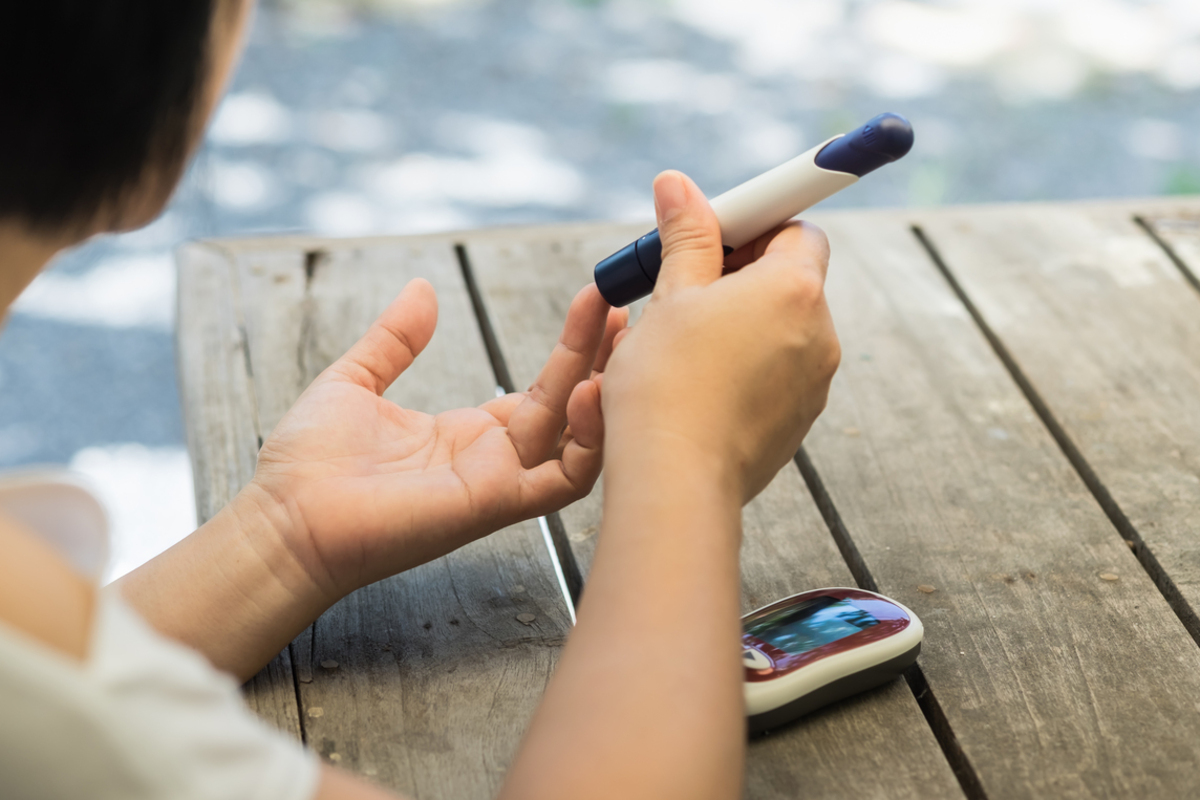Lara was 15 when she was diagnosed with diabetes. She had all the symptoms and signs that have come to be expected with diabetes. She was thirsty. She ate all the time but wasn’t gaining weight. The morning Lara was taken to the ER because she couldn’t see, her blood sugar level was 1,243 mg/dl (69.1 mmol/L). The doctors and nurses were amazed that except for the fact that her vision was blurry, Lara was walking around and otherwise functioning normally.

Lara had developed a kind of bulimia she thought she could manage with insulin. The problem was, she couldn’t.
By the time Lara started college, she made a habit of avoiding her endocrinologist. When her parents asked how her blood sugar management was going, she would answer, “Oh, I stay in the 100s.” But the fact was, she frequently had blood sugar levels between 700 and 900 mg/dl (about 40 to 50 mmol/L). At some point, Lara realized that she didn’t have to wait until her blood sugar level was dangerously high to make herself throw up. Then after three days and nights of binge eating, Lara wound up in the ICU.
What is diabulimia?
Diabulimia is a portmanteau of diabetes and bulimia. In diabulimia, type 1 diabetics deliberately stop giving themselves insulin to lose weight or to keep from gaining it. Here are four important facts about the disease.
1. Only diabetics develop diabulimia
More specifically, only insulin-dependent diabetics develop diabulimia. Diabetics of any age sufficient to manage their own insulin injections can develop diabulimia, but it is more common in teenagers and young adults.
2. Diabulimia is very common among teenage females who have type 1 diabetes
One study that followed 91 teenager girls who had type 1 diabetes for four years found that 45 percent used insulin for weight control, that is, 45 percent of these 91 teenage girls had diabulimia.
3. Diabulimia is also common in adult diabetics who use insulin
Another study found that 39 percent of adult males who use insulin for diabetes occasionally cut back on insulin injections to lose weight. However, only 20 percent of adult women who are insulin-dependent manipulate insulin dosage for weight control.
4. The most dangerous potential complication of diabulimia is ketoacidosis.
Someone who has ketoacidosis will almost certainly be fatigued. They may, like Lara in the story above, suffer blurry vision. They likely have been losing weight recently. They will have nausea, vomiting, decreased vomiting, and vague abdominal pain. As the condition progresses, the skin and mucus membranes will dry out. The pulse accelerates but blood pressure falls. Body temperature falls. Breathing becomes labored. The breath smells like nail polish remover.
Someone who has advanced ketoacidosis may become very talkative but not make a lot of sense. In the condition continues to be untreated (hospital treatment is required) coma and death follow.
A relatively healthy person can die after just one binge eating episode in diabulimia. It’s a potentially deadly condition. If you suspect someone you care for is misusing insulin, encourage them to be honest about their appetites. Honest overeating is less deadly than skipping insulin to avoid weighing too much at the next doctor’s visit.
- Kınık MF, Gönüllü FV, Vatansever Z, Karakaya I. Diabulimia, a Type I diabetes mellitus-specific eating disorder.Turk Pediatri Ars. 2017 Mar 1
- 52(1):46-49. doi: 10.5152/TurkPediatriArs.2017.2366. eCollection 2017 Mar.PMID: 28439201.
- Larrañaga A, Docet MF, García-Mayor RV. Disordered eating behaviors in type 1 diabetic patients.World J Diabetes. 2011 Nov 1.
- 2(11):189-95. doi: 10.4239/wjd.v2.i11.189. PMID: 22087355.
- Tareen RS, Tareen K. Psychosocial aspects of diabetes management: dilemma of diabetes distress. Transl Pediatr. 2017 Oct
- 6(4):383-396. doi: 10.21037/tp.2017.10.04. Review.PMID: 29184819.
- Photo courtesy of SteadyHealth


Your thoughts on this